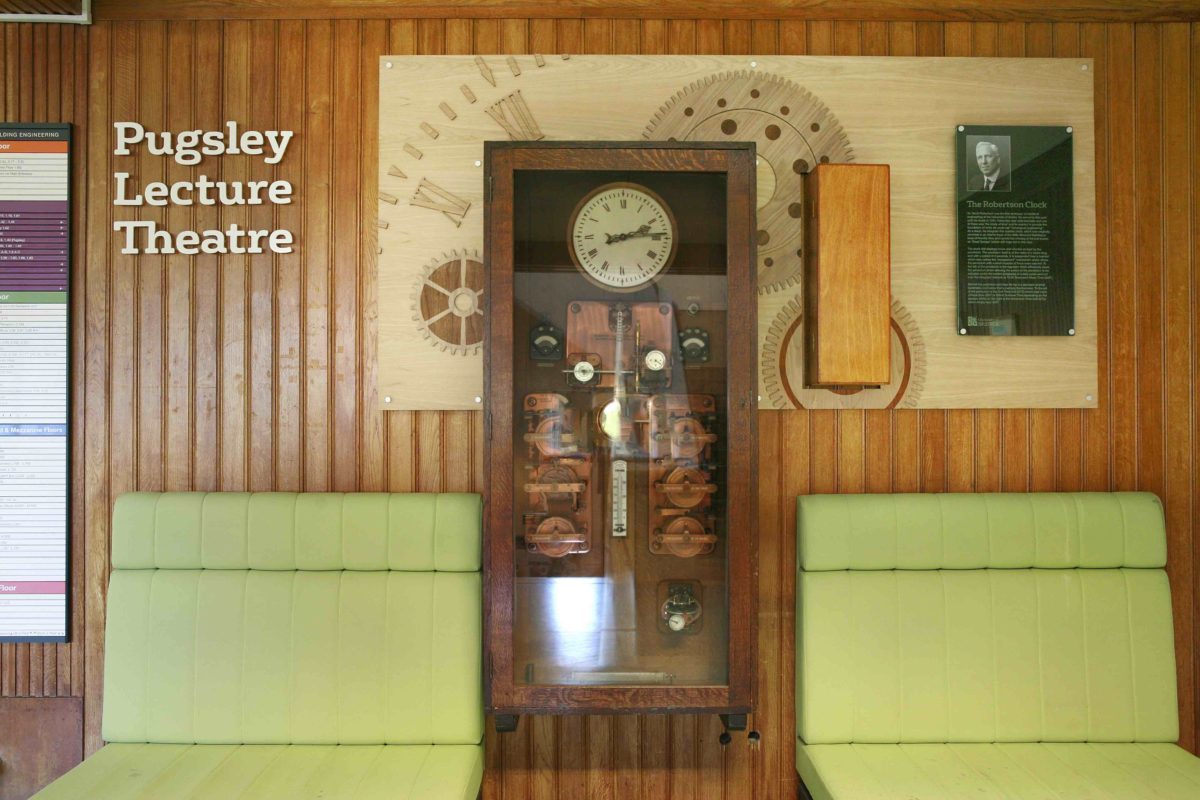Robertson Clock interpretation
University of Bristol
The Robertson Clock once controlled the chiming of Great George, the bell at the top of the Wills Memorial Tower. We designed an interpretive display explaining the significance of the newly restored clock, which can now be seen in the University of Bristol Queen’s building.

We decided to use wood for the signage as this blended well within the space. The walls are covered in wooden panelling and the clock itself is enclosed in a wooden case. Working with wood on this scale gave us the opportunity to try out different laser-cutting and etching techniques to create a really eye-catching display. The signage features plenty of clock-themed imagery. Cogs made from walnut and cherry MDF veneer were bonded to the oak veneer back panel. These had black painted edging and were laser-etched to show different tones and colours. A clock face, laser cut to shape was also added to the back panel, which neatly surrounds the clock.
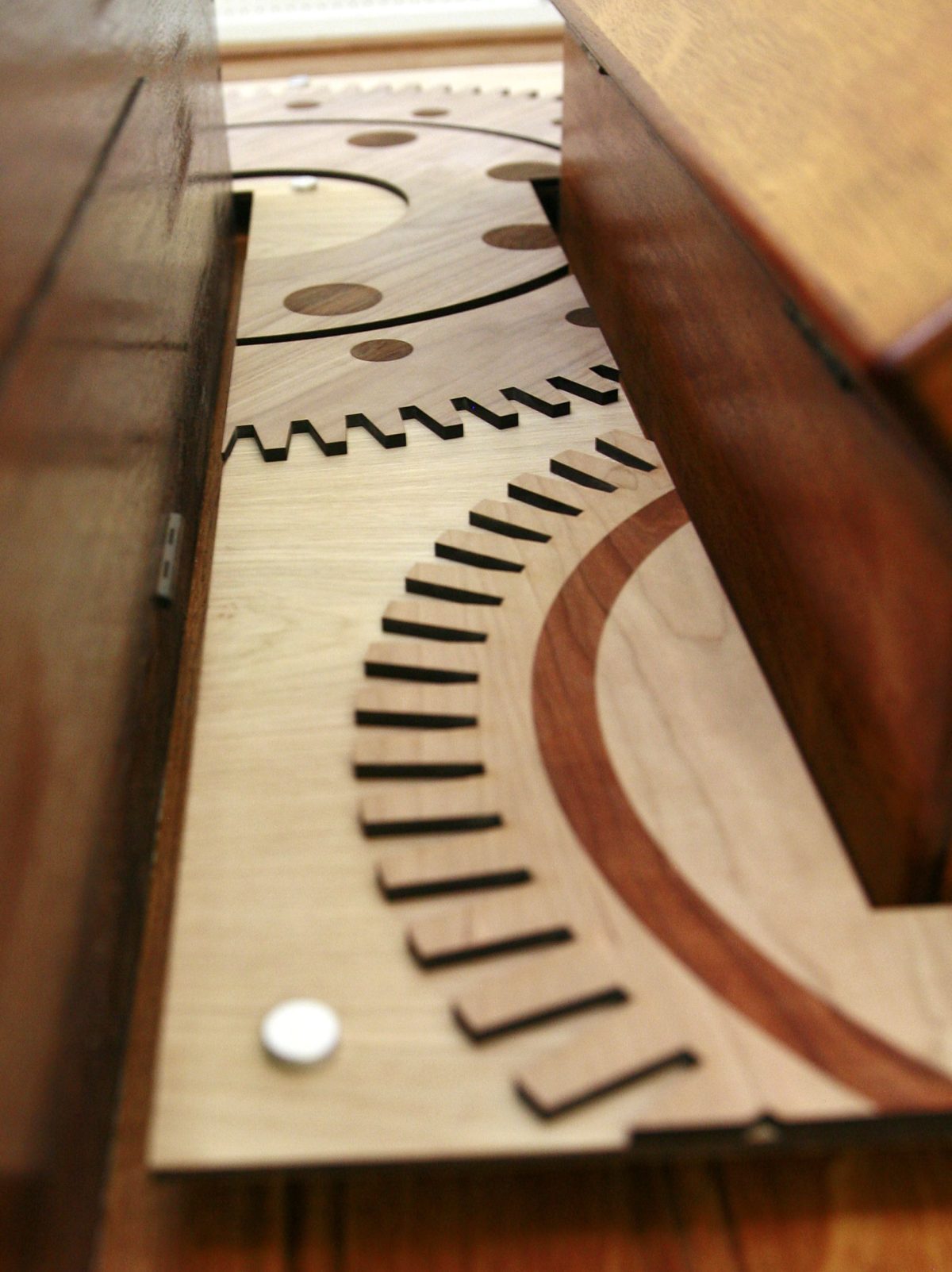
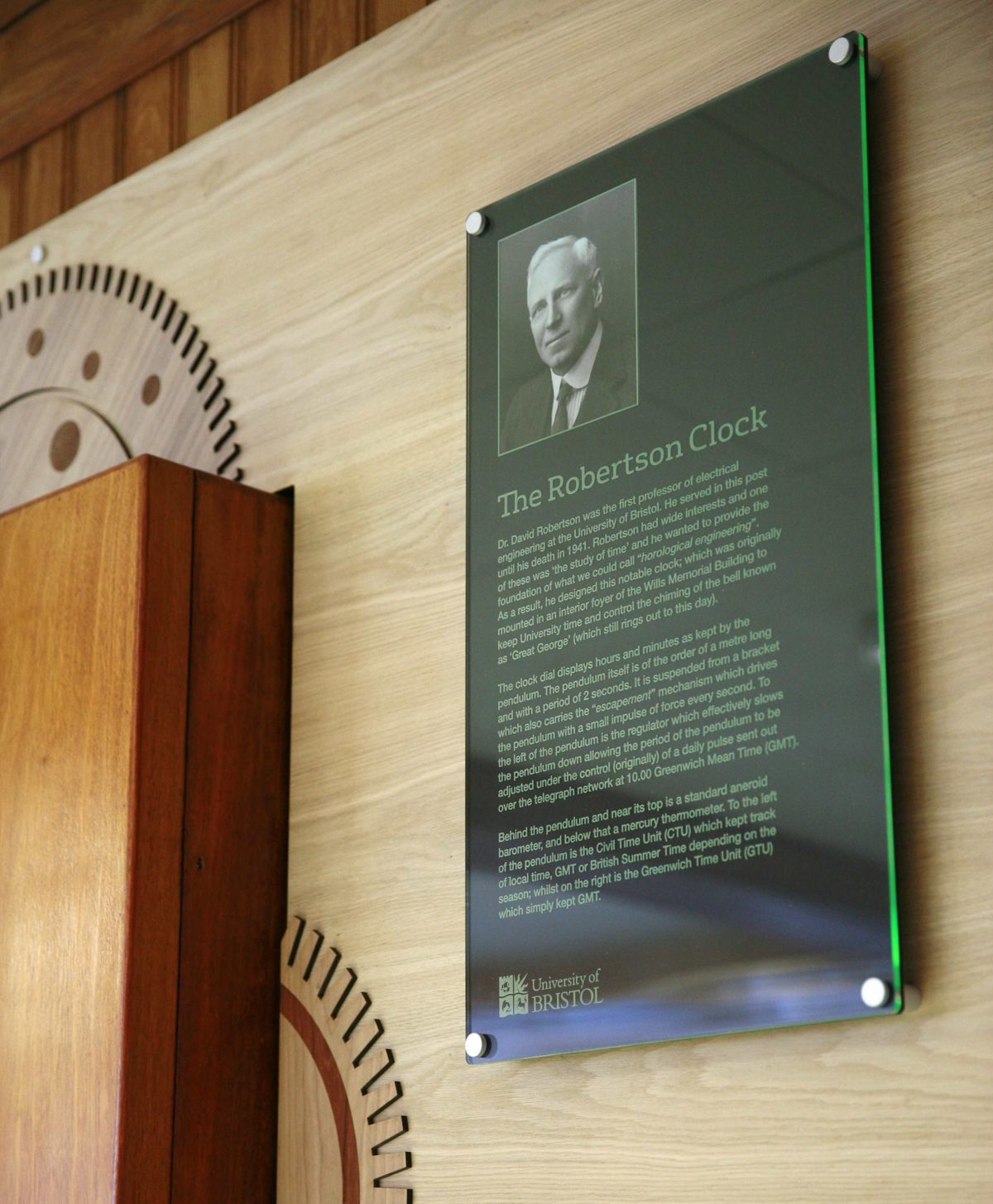
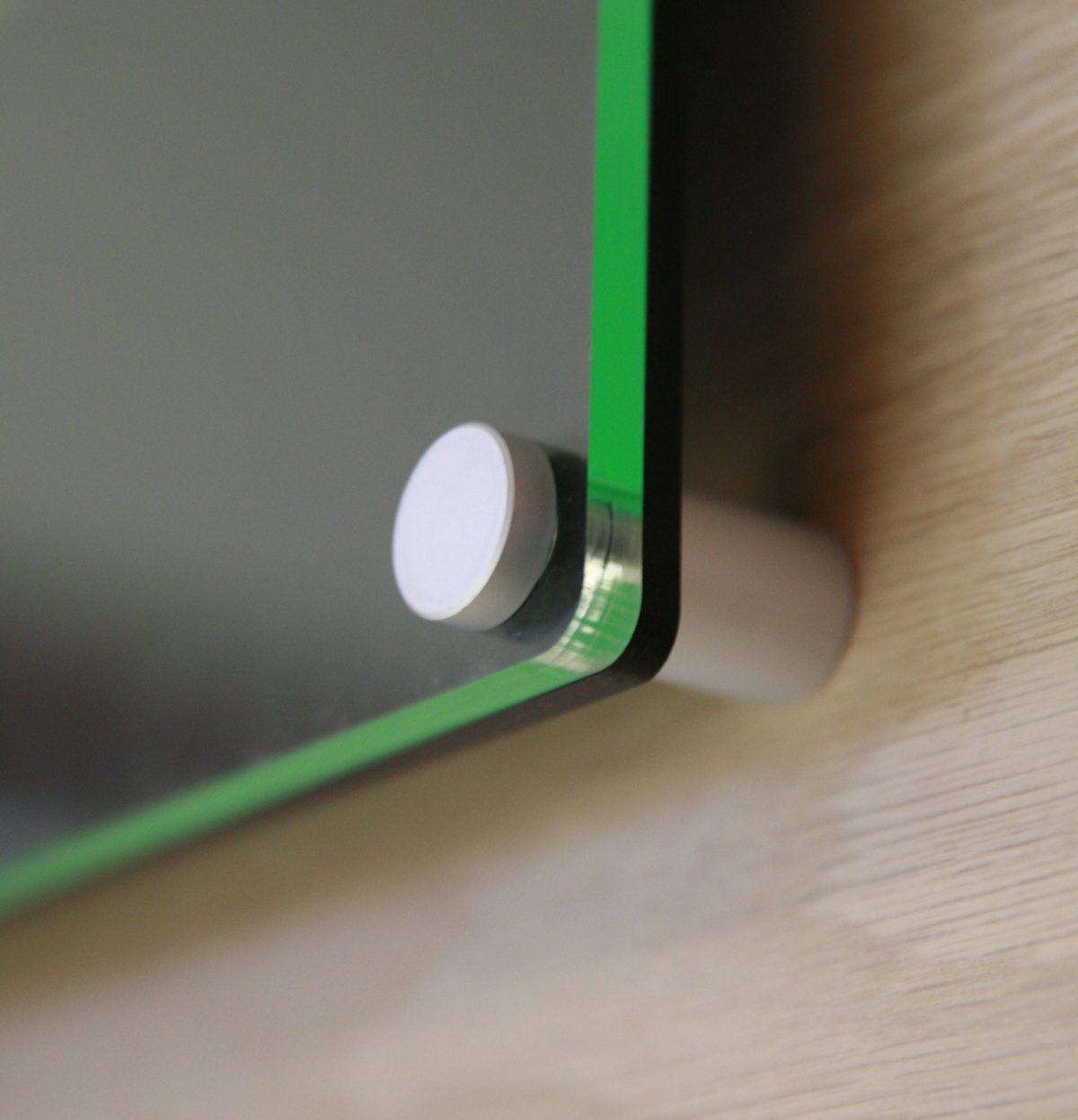
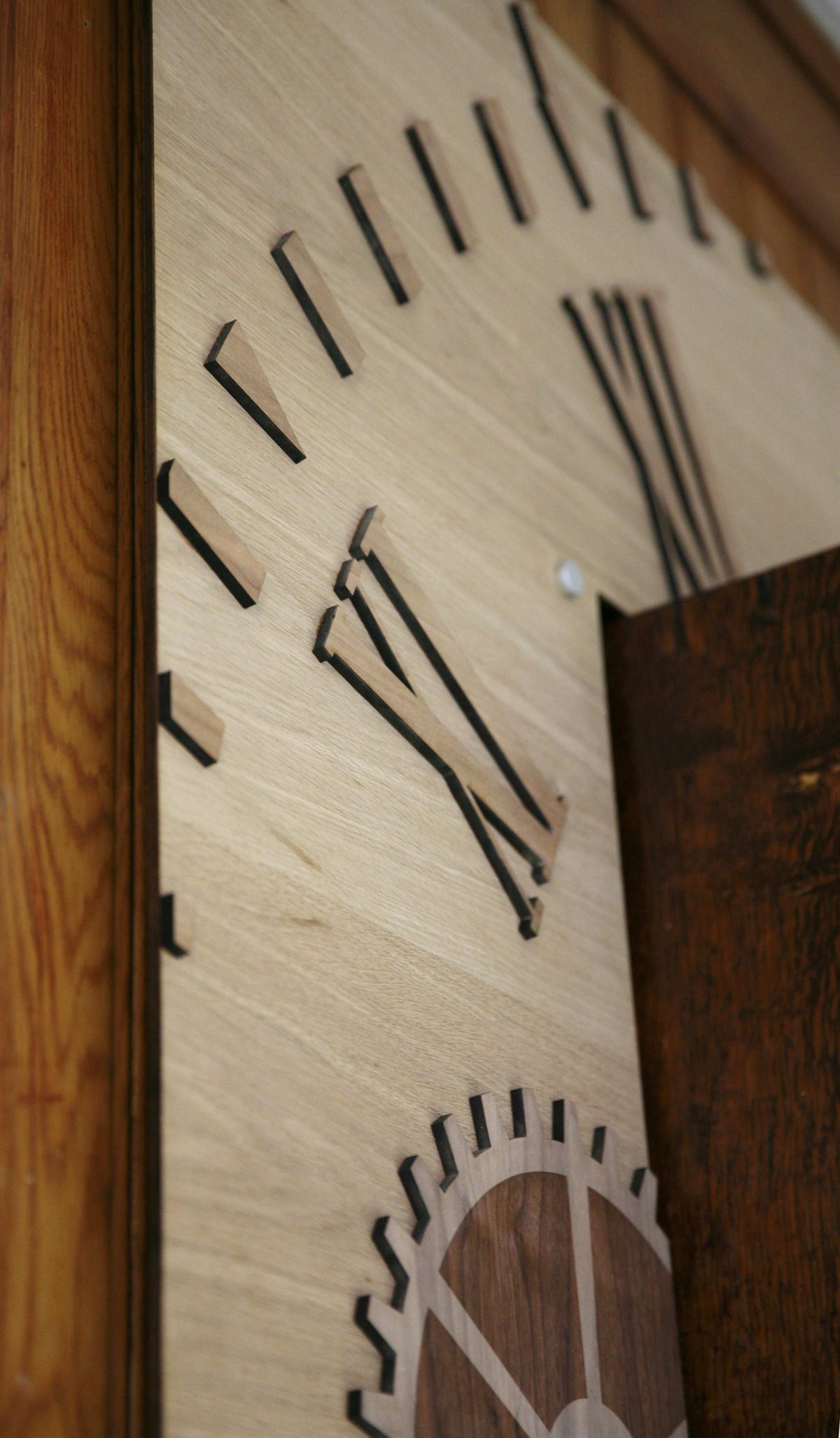
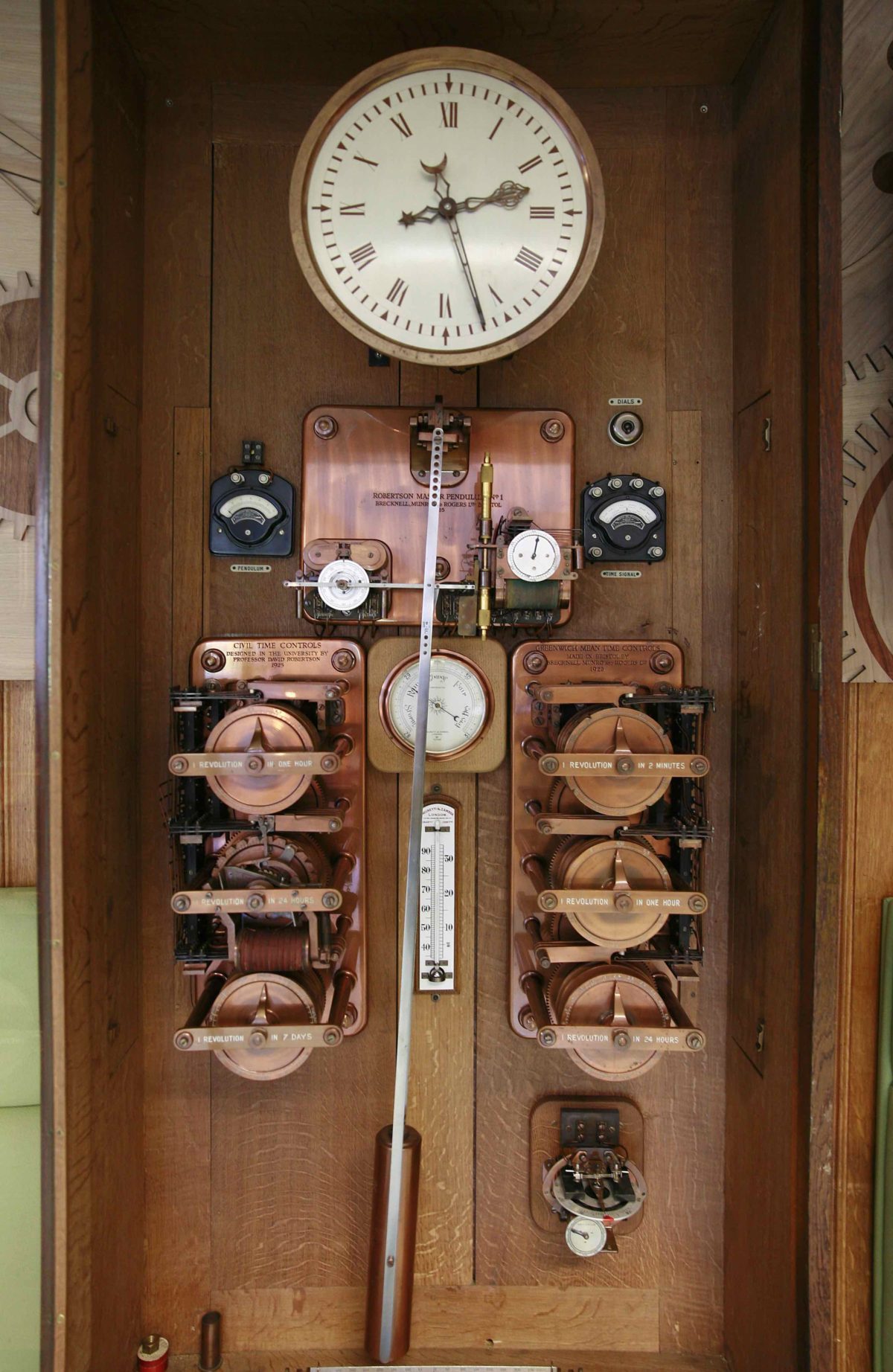
We laser-etched the reverse face of a clear piece of green-edged acrylic with information about Professor David Robertson who designed the clock. This was then backed using dark grey acrylic which created contrast, ensuring the text was legible; it also protected the type from the front. Robertson was the first professor of electrical engineering at the University of Bristol. ‘The study of time’ was one of his many interests and his pendulum clock was synchronised daily with time signals sent out from Greenwich by telegraph. Robertson’s method of synchronisation was unique and used techniques that are now vital in radio, telecommunications and computing.
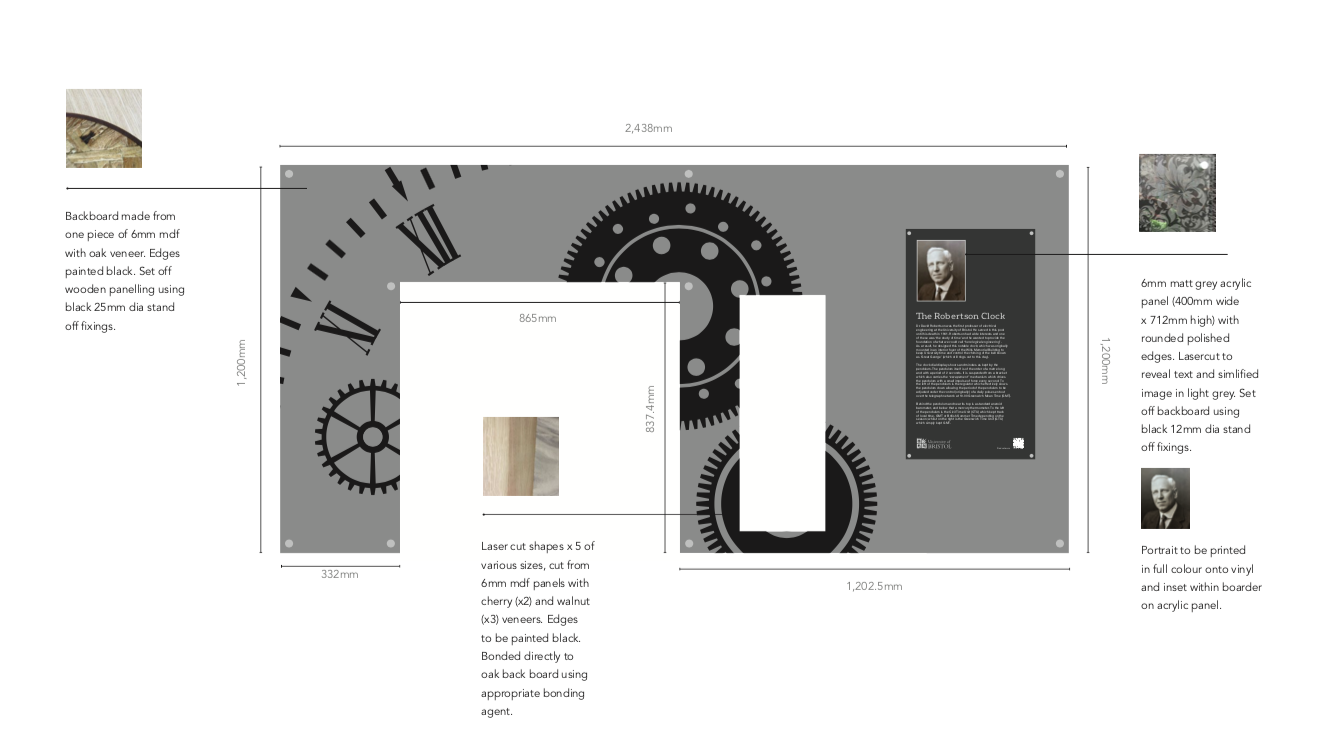
We collaborated with Bristol Design Forge on this project and they created the bespoke laser-cut and laser-etched features on the display. The restored clock has already been inspiring students for their final year projects and we hope the display keeps Robertson’s legacy ticking over for a few years to come.
